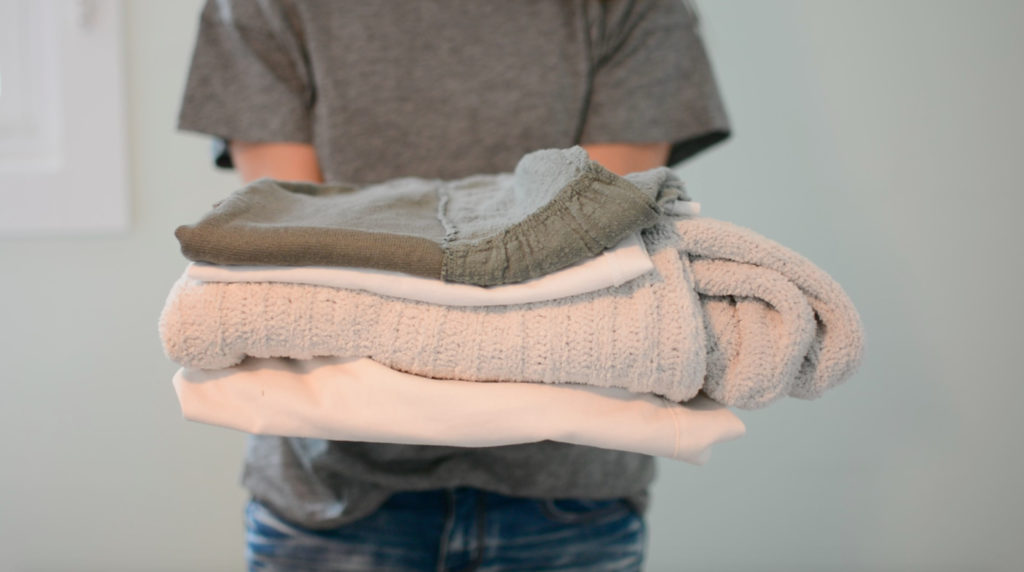By Elizabeth Merrit ’20, Hope College Green Team
What you spend your money on says a lot about what you value. Yet, many people do not think of their purchases in this way, especially when it comes to apparel. Although there are some very conscientious companies, many supply chains trace back to unethical practices, human trafficking, and environmentally harmful production processes.
The way we produce our clothing can be very harmful to the earth and to other human beings. In an effort to fully understand the weight of this, we first need to understand the terms associated with the making of clothing.
“Fair trade” means that the current seller is the original buyer who purchased goods from a producer, usually in a developing country, at a fair living wage. The goal of fair trade is to focus on income stability, empowerment for the producers, and environmental stewardship.
For example, The Bridge, a store located on Eighth Street in Holland, is dedicated to fair trade. An outreach of Western Theological Seminary, The Bridge strives “to provide clothing that is fair trade and sustainably made.” Suppliers provide information about the materials and processes used in producing the clothing and also the artisans who make the fashions.
As Sara Schipper Russell,, manager at The Bridge puts it: “One of my favorite quotes about fashion comes from Vivienne Westwood: ‘Buy less, choose well, make it last.’ ”
“Sustainable” means maintaining and preserving natural resources now so these resources are available in the future. When apparel is made sustainably, it is not done with harmful chemicals but instead focuses on renewable, clean, water-conserving methods.
“Ethical” is an umbrella term covering issues of fair trade, humane working conditions, sustainability, exploitation, and labor trafficking. Ethically-made clothing is produced by companies that aim to mitigate issues among clothing production, so they are especially conscious of who makes them and how.
“Conscious fashion” is another catch-all phrase that encompasses eco-friendly and sustainable efforts. This is a common term used by companies that are greenwashing.
“Greenwashing” describes a company that claims to be sustainable or environmentally friendly, but further investigation reveals this is false or exaggerated.
The “transparency label” exists so that we can ask questions of large corporations and their extensive supply chains. Don’t be mistaken, though – transparency does not mean the same as ethical or sustainable. Transparency metrics are used more in addressing factory conditions and exploitation. This should not be where you stop your research.
“Cruelty-free” means that no animals were harmed in the creation or testing of the product.
“Organic” means that the clothing was made from only natural fibers that were produced without the use of highly toxic chemicals.
“Slow fashion” means that instead of focusing on 52 clothing seasons a year, like fast fashion does, it focuses on classic pieces that aren’t trendy.
The clothing industry alone accounts for 10 percent of annual global carbon emissions. This is more than the carbon emissions emitted each year from both international flights and shipping combined.
Beyond this, it is estimated that around the world only 2 percent of fashion workers make more than a living wage. The startling statistics go on and on for the fashion worker industry.
Knowing these terms will help you research who and what goes into the production of your clothing.
Start giving your business to companies that support values important to you and missions that you align with, such as safe factories, responsible environmental stewardship, and ethical practices.
Elizabeth Merrit is a senior at Hope College, graduating in December of 2020. Elizabeth has worked with the Hope College Green Team since August of 2019. This summer she is conducting marketing research and content creation for the Office of Sustainability.
This Week’s Sustainability Framework Theme
Environmental Awareness/Action: Environmental education and integrating environmental practices into our planning will change negative outcomes of the past and improve our future.
ABOUT THIS SERIES
Living Sustainably is a collection of community voices sharing updates about local sustainability initiatives. It is presented by the Holland-Hope College Sustainability Institute, a joint project of Hope College, the City of Holland and Holland Board of Public Works. Go to www.hope.edu/sustainability-institute for more information.


